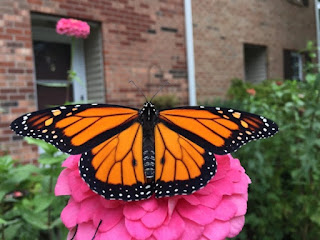Military Biomimetics and Butterflies
As stated before, biomimetics is when scientists observe in nature and try to imitate certain abilities or characteristics of organisms for our purposes. Hummingbird wing motions for use in aerial vehicles, the navigability and structure in the boxfish, woodpeckers for brain cushions, and a passel of other things.
Military minds are always on the lookout for developments that can give an edge over enemies, and it is surprising that butterflies are being studied. Another surprise is that the research is not for flight, but for submarines.
 |
| Monarch butterfly, Pixnio / Nextreader |
You can probably think of a lot of creatures that a military might decide to copy for its submarine designs. Sharks or giant squids. Whales, perhaps. Or what about… butterflies?MIT reports that one of their engineers, Dr. Philip Daniel, is collaborating with the U.S. Department of Defense to a create a magnetic navigation system inspired by monarch butterflies. . . .. . .Every year, around a billion monarchs travel from across North America to gather overwinter in a few specific locations in Mexico. Because adult monarchs live less than a year, none of these butterflies have made the journey before, yet they all somehow know how to travel hundreds upon hundreds of miles to arrive in the same place.
To read it all, see "Battle Butterflies."